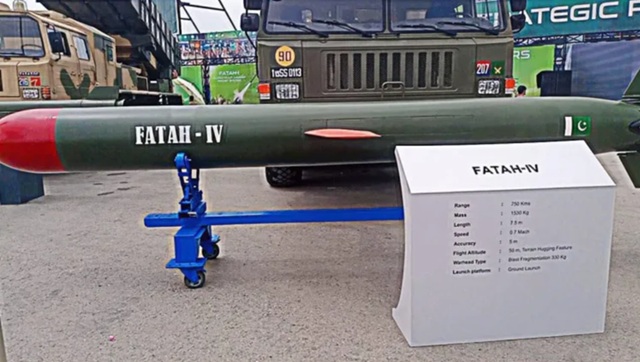India’s Prime Minister Narendra Modi, in his Independence Day address on August 15, 2025, announced Mission Sudarshan Chakra, a strategic initiative to develop a comprehensive, indigenous air-defense system by 2035. This “national security shield” aims to protect India’s military, civilian, and strategic infrastructure, including railway stations, hospitals, and religious sites, from evolving threats such as missiles, drones, and other aerial attacks. The mission draws inspiration from Lord Krishna’s mythological weapon, the Sudarshan Chakra, symbolizing precision, power, and the ability to neutralize threats and strike back.
Context
Geopolitical and Security Environment
Recent Tensions with Pakistan: The announcement comes in the wake of heightened tensions with Pakistan. Modi claimed that this operation showcased India’s technological prowess and self-reliance, setting the stage for a more robust defense framework.
Regional Threats: Beyond Pakistan, India faces security challenges from China, particularly along the Line of Actual Control (LAC). The need for a modern, multi-layered defense system is driven by the evolving nature of warfare, including cyber threats, drone attacks, and missile-based assaults.
Global Strategic Dynamics: Modi’s speech highlighted India’s resistance to external pressures, such as U.S. trade tariffs and demands to open agricultural markets, signaling a broader push for strategic autonomy.
Global Benchmarks
Comparison to Israel’s Iron Dome: Experts suggest Mission Sudarshan Chakra may be modeled on Israel’s Iron Dome. However, India’s system is envisioned to be broader, integrating AI-driven surveillance, precision targeting, and offensive capabilities tailored to India’s unique security needs.
Challenges
Jet Engine Development: Modi’s call for indigenous fighter jet engines highlights a critical gap. The Kaveri engine project, initiated in 1989, remains incomplete despite ₹2,035 crore in expenditure, illustrating the complexity of developing advanced propulsion systems. Delays in technology transfer agreements, such as with GE Aerospace for the Tejas Mark 2, underscore reliance on foreign expertise.
R&D Timelines: Developing a multi-layered defense shield integrating AI, precision targeting, and offensive capabilities within a decade is ambitious. Similar systems, like Israel’s Iron Dome, required decades of iterative development and significant investment.
Cybersecurity Integration: Protecting civilian infrastructure (e.g., hospitals, railway stations) requires robust cybersecurity measures, an area where India is still building capacity.
High Costs: Developing a system as sophisticated as Sudarshan Chakra will require substantial investment in R&D, manufacturing, and testing. For comparison, Israel’s Iron Dome development involved billions of dollars, with ongoing costs for maintenance and upgrades.
Global Trade Pressures: U.S. tariffs on Indian goods (25-50% as of August 2025) could strain India’s economy, potentially diverting resources from defense projects.
Supply Chain Risks: Dependence on critical minerals and components for advanced systems remains a challenge, despite progress in semiconductor manufacturing.
Scale and Coverage: Protecting a vast country like India, with diverse terrain and population centers, requires a scalable and resilient system. Ensuring nationwide coverage by 2035 is a logistical challenge.
Interoperability: Integrating new systems with existing platforms (e.g., S-400, BrahMos) and ensuring coordination across the Army, Navy, and Air Force will require significant effort.
Maintenance and Upgrades: A system of this scale will need continuous upgrades to counter evolving threats, requiring long-term commitment and expertise.
Regional Sensitivities: The mission’s announcement amid tensions with Pakistan and criticism of the Indus Waters Treaty could escalate regional tensions۔
Public Expectations: High-profile announcements raise expectations. Any delays or setbacks, as seen with the Kaveri engine project, could lead to public and political criticism.
Risks and Mitigation
Technological Risks: The complexity of integrating AI, surveillance, and offensive systems requires sustained R&D investment. Collaborations with global partners (e.g., Israel for missile defense expertise) could accelerate progress without compromising self-reliance.
Economic Risks: High costs could strain India’s budget, especially amid global trade challenges.
Geopolitical Risks: Aggressive rhetoric against Pakistan and the suspension of the Indus Waters Treaty could escalate tensions.
Execution Risks: India’s history of delays in projects like Kaveri suggests execution challenges. Clear timelines, accountability mechanisms, and regular progress reviews are essential.
Comparative Perspective
Israel’s Iron Dome: The Iron Dome’s success lies in its ability to intercept short-range rockets with high accuracy. However, India’s Sudarshan Chakra aims for broader coverage, including long-range missiles and drones, it has to address a larger geographical and population scale.
U.S. THAAD and Patriot Systems: These systems offer advanced missile defense but are expensive and rely on U.S. technology. India’s focus on indigenous development avoids such dependencies but requires significant technological leaps.
China’s Defense Systems: China’s rapid advancements in missile defense and hypersonic weapons highlight the competitive landscape. India needs balance speed, innovation, and cost to keep pace.
Conclusion
Mission Sudarshan Chakra is an ambitious and strategically significant initiative that aligns with India’s goals of self-reliance, technological advancement, and robust national security. However, challenges in technology development (e.g., jet engines), high costs, and the need for nationwide coverage pose significant hurdles. Achieving the 2035 timeline will require sustained investment, public-private collaboration, and effective project management.
Discover more from Defence Talks | Defense News Hub, Military Updates, Security Insights
Subscribe to get the latest posts sent to your email.





